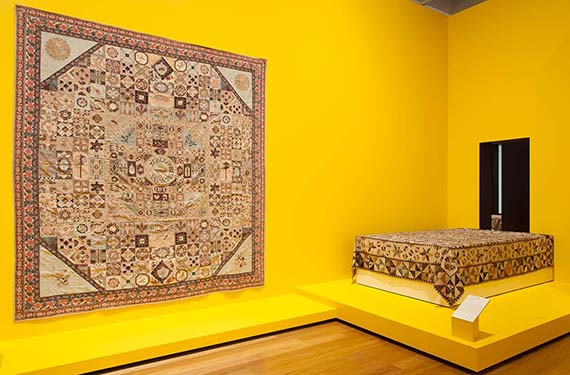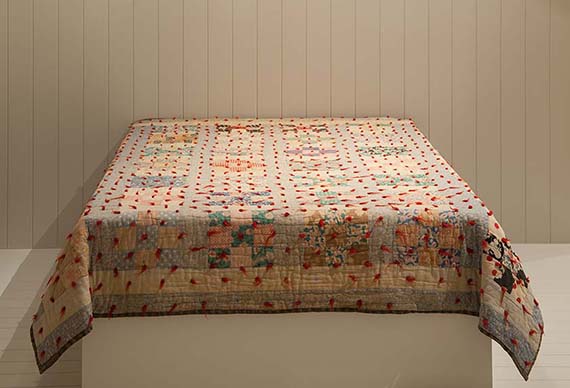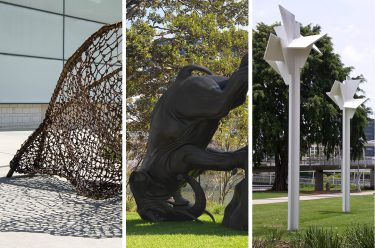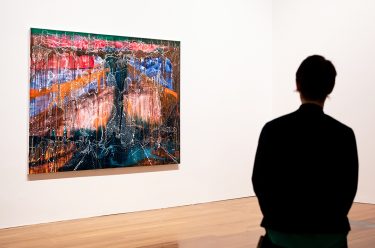
In the lead up to this exhibition I’ve spent the past twelve months looking at reproductions of the patchworks and quilts from the Victoria and Albert (V&A) Museum’s collection in anticipation of their arrival in Brisbane. Like paintings, sculpture, drawings, prints and photographs, nothing, however beautifully reproduced, can really prepare you for how absorbing material objects such as these can be when you see them for the first, (second, even third) time in front of you. The printed fabrics made in the 18th and 19th centuries, in India and Britain, which make up the hundreds of patches in each of these works are truly stunning, and it’s clear from seeing these pieces how influential they have been on subsequent textile designers.
I was also captivated by the broad social history that emerged in each section of the exhibition as the quilts were unpacked, laid on their plinths and hung on the walls. On seeing the quilts arranged and hearing V&A curator Sue Prichard talk about what she had discovered in her research, pieces which had not previously appeared to warrant special attention were completely transformed for me and became compelling objects in their own right — look out for the globe complete with a map of Australia in the top right corner of ‘Coverlet with Sundial’ dated 1797 and consider the young girl sleeping in a Morrison shelter under the ‘Canadian Red Cross Bedcover’ 1939-41, as the bombs were falling during the Blitz in London.
Walking through ‘Quilts 1700-1945’ is a fascinating and beautiful experience. On display until 22 September 2013.





I thoroughly enjoyed my visit to the exhibition. The quilters must have had impressive mathematical minds because I assume that all or most of them wouldn’t have been made from patterns or books. The intricacies of the patterns were amazing. In the plain coloured, quilted items, I was struck by the evenness of the stitches. I think that it must have taken a long, long time to make most of the quilts because of the size of them but also because it would have been possible to work on them only in daylight hours. There was so much of interest that I am looking forward to a return visit.
I loved the quilting exhibition immensely. However, I was disappointed that in those pieces where the back of the quilt was referred to, it was not shown. I believe that in most cases it would have been possible to upturn the corner of a quilt to display what was being commented upon about the reverse side.
Hi Sheila. In most cases, the reverse side of the quilts don’t reveal much – the majority are lined in a single piece of fabric, which we’ve described in the label. The lender, the V&A London, believe that the quilts should be shown as they were intended to be seen by their creator, and we’ve honoured this in our exhibition. However, there is one patchwork coverlet that is not lined – the Chapman coverlet. This has been shown in such a way that visitors can see the back, and glimpse the paper templates and the coarse tacking used in this patchwork, which was never completed. We hope this answers your question. Regards QAGOMA
I thoroughly enjoyed my visit to your Art Gallery to look at this amazing selection of quilts and I travelled from the Upper Hunter Valley in NSW to look at them…………..The amazing handiwork of many mostly unknown women. Thankyou for the opportunity of seeing them in Australia. Thankyou again
Could you tell me the year of the Indian bed curtains?
Hi Lee, hopefully this link to our Quilts playlist can answer your question https://www.youtube.com/watch?v=vNkjDgfntAc&list=PL_OplQD58KphCLd8MBQYXYeeW4msZITO5. Regards QAGOMA